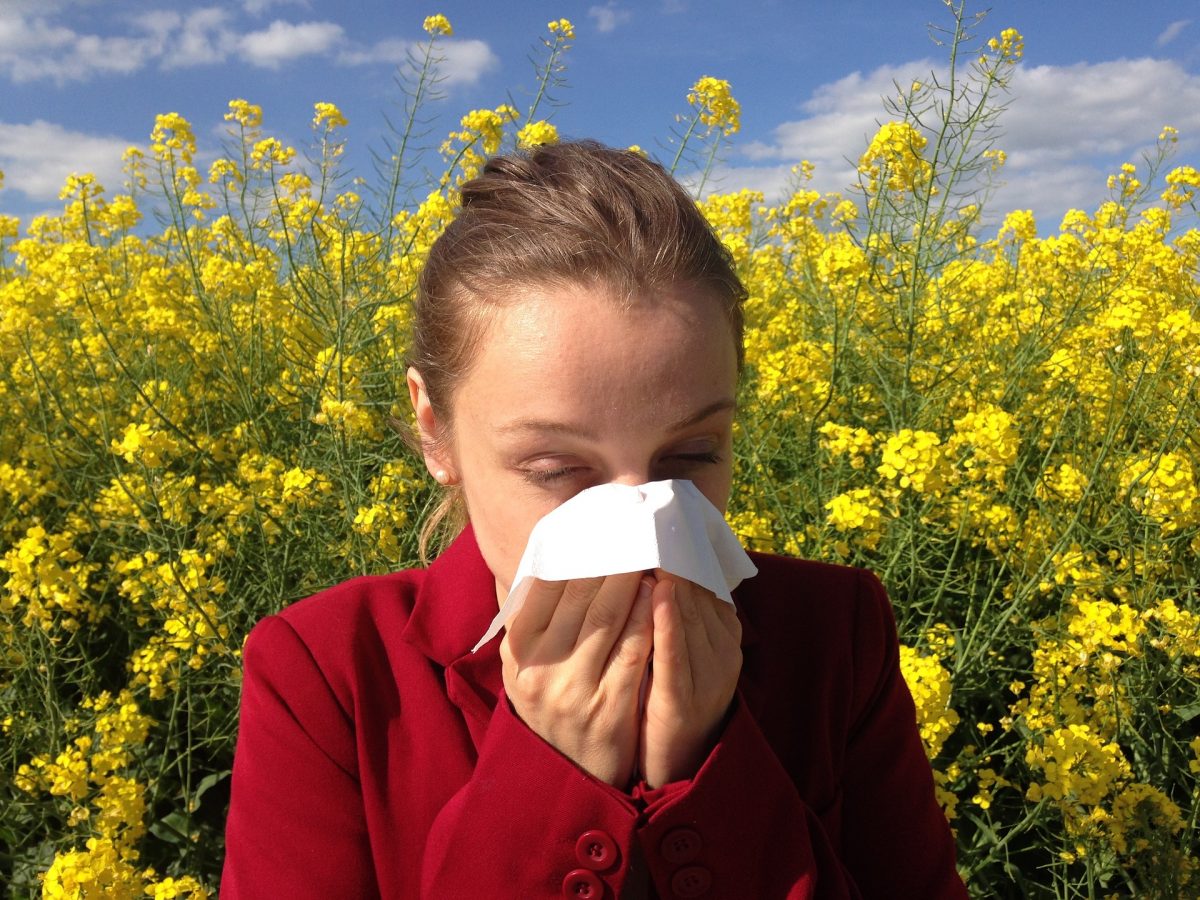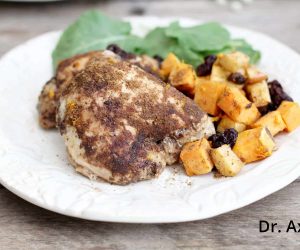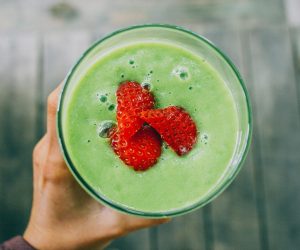
Does Histamine Intolerance Cause Allergies, Headaches & Bloating?
Dr. Josh Axe, DC, DNM, CN – To alleviate allergy-like symptoms, many people seek natural remedies for allergies — yet some folks continue to experience difficult, even strange, symptoms. Frustrating! Until recently, most health care practitioners just chalked up runny noses, itchy skin and headaches after meals to “food allergies,” but it’s not that simple because IgE allergy-mediated response tests usually come up negative.
Instead, the problem all along could be histamine intolerance. While few clinicians are aware of this health disorder, due to the rising number of patients, I have little doubt it will soon become another “hot topic” within the profession. At the moment, expert opinion suggests at least 1 percent of the population suffers from histamine intolerance, most of whom (80 percent) are middle-aged women. (1)
Like many other conditions, histamine intolerance is only considered relatively rare simply because medical professionals don’t recognize the condition. An untold number of cases are currently undiagnosed, and considering the diversity of symptoms, that particular oversight is entirely understandable!
What Is Histamine Intolerance?
According to the German journal Deutsches Ärzteblatt International, histamine intolerance is “disequilibrium of accumulated histamine and the capacity for histamine degradation.” Essentially, patients don’t develop a sensitivity to histamine — they simply have too much of it. Several factors contribute to the body accumulating high levels of histamine, and most relate to the molecule failing to be broken down and degraded in the normal way.
Although many people associate histamine only with allergic responses, under normal circumstances it’s an essential molecule performing three important functions. Histamine is primarily: (2)
- A neurotransmitter, like a chemical messenger, that passes from one neuron to another in the nervous system.
- A component of stomach acid that helps break down food.
- An inflammatory response mechanism that dilates blood vessels to enable white cells to quickly reach and neutralize invaders.
These roles are vital to life. However, when histamine levels get too high, the end result is serious disruption to quality of life and even death.
There are two main enzymes in the body that degrade histamine. (3) One is N-methyltransferase (HMT), which deals with histamine in the central nervous system (CNS). The other is diamine oxidase (DAO), which is responsible for breaking down histamine ingested in foodstuffs.
The failure of DAO to degrade histamine is, for the most part, responsible for the number of cases of histamine intolerance seen today. (4) DAO’s failure to degrade excess histamine results in a double-whammy: histamine levels rising and unpleasant symptoms.
DAO may be affected for a number of reasons, and the problems relate to both internal and external triggers: (5)
- DAO can be reduced due to gastrointestinal disease.
- Certain medications, both over-the-counter and prescribed, contribute to blocking DAO and preventing production.
- Many normally recommended foods have high histamine levels and contribute to a current dysfunction.
- Some foods have the ability to block DAO.
Other foods compound the problem further because they have the ability to trigger the release of histamine within the body even if they don’t contain it. The more DAO is blocked while histamine production continues and histamine-rich foods are ingested, the worse the reaction for the patient.
Symptoms
When the body reaches abnormally high levels of histamine, beyond the body’s ability to break down such an overload, a broad range of symptoms occur. (6) Many of these symptoms, listed below, are similar to allergic symptoms, so you should check for histamine intolerance when such reactions appear.
- Abdominal cramps
- Abnormal menstrual cycle
- Anxiety
- Breathing problems
- Conjunctivitis (pink eye)
- Difficulty falling asleep/overstimulation
- Digestive disturbances
- Dizziness or vertigo
- Fatigue
- Flushing
- Headaches or migraines
- Acid reflux
- Hypertension (high blood pressure)
- Hypotension (low blood pressure)
- Itching
- Nausea and/or vomiting
- Nasal congestion
- Sinus problems
- Sneezing
- Tachycardia (rapid heart rate)
- Temperature dysregulation
- Tissue swelling/inflammation
- Urticaria (hives)
Clearly, the broad range of symptoms can, and does, result in patients being diagnosed with any number of conditions prior to histamine intolerance even being considered. In many cases, the issue of diagnosis is compounded still further because people continue to consume what’s normally considered to be a healthy and nutritious diet, and any lifestyle shortcomings aren’t immediately apparent.
Indeed, for many people, an accurate diagnosis can take a long time, which is a frustrating process for both patient and clinician alike.
Causes
Several apparently unrelated factors can lead to histamine intolerance. These include DAO blocking, GI disorders, bacterial overgrowth and even UV light.
DAO Blocking
As already discussed, DAO blockage results in too little of the enzyme to cope with the amount of histamine either synthesized in the body or ingested through food. Many foods are high in histamine, and if someone has a reduced amount of DAO, then symptoms of intolerance erupt.
Gastrointestinal Disorders
Various gastrointestinal diseases can also result in histamine intolerance: (7)
- Gluten sensitivity
- Leaky gut syndrome
- Crohn’s disease
- Ulcerative colitis
- Inflammatory bowel disease (IBS)
- Small intestine bacterial overgrowth (SIBO)
Bacterial Overgrowth
There’s a developing school of thought that histamine intolerance is caused by the overgrowth of bacteria that produce histamine from undigested food. Resulting in overproduction of histamine that can’t be degraded by DAO, this explains why so many people with ongoing allergies often suffer from the GI conditions listed above.
UV Light
Other research indicates UV light may trigger histamine release. A study found that this particular reaction might also be enhanced by some phenothiazine compounds, which occur in prescription medications relating to psychiatric treatments for conditions ranging from anxiety and depression to schizophrenia. Yet, there are numerous over-the-counter and prescribed medications that affect DAO either directly or indirectly. Any patient on medication for the conditions below and suffering from recurring “allergy” symptoms should check for possible histamine intolerance: (8)
- Non-steroidal anti-inflammatory drugs (NSAIDS) — aspirin and ibuprofen
- Immune modulators — Enbrel, Plaquenil, Humira
- Antidepressants and antipsychotics — Prozac, Zoloft, Effexor, Cymbalta
- Antihistamines — Benadryl, Allegra, Zyrtec
- Antiarrhythmics — Cardizem, Norvasc, propranolol, metoprolol
- H2 histamine blockers — Pepcid, Zantac, Tagamet
What to Do If You Have Histamine Intolerance
When histamine intolerance develops due to an acquired cause — for example, from certain medications — the problem is relatively easy to diagnose and reverse. However, other causes, and the subsequent management of reactions, may not be so simple. Some patients opt for testing DAO levels, but the test isn’t widely available.
Here are four strategies you can follow if you think you suffer from histamine intolerance:
1. Elimination Diet
One of the first steps for many people is to go on an elimination diet. All foods high in histamine are removed from the diet for a period of one to three months to see if symptoms improve. These foods are then gradually reintroduced to monitor reactions.
2. DAO Supplement
Another option many patients find not only acceptable, but also preferable, is simply to raise their DAO levels by taking daily supplements. However, the current product range is, at best, sparse, and this isn’t a cheap option. Still, for many it can improve quality of life without going through the further disruption of food elimination or testing.
You can also take digestive enzymes for histamine intolerance.
3. Low-Protein Diet
Since histamine is made from amino acids and amino acids derive from proteins, it follows that foods high in protein (which take longer to digest) ultimately affect histamine levels. Additionally, histamine levels elevate as food is allowed to age in the gut, which can feed bacteria that can continue to feed the cycle.
4. Low-Histamine Diet
Not only should protein-rich foods be avoided, but also these foods may aggravate histamine intolerance:
- Alcohol and other fermented drinks
- All citrus fruits — oranges, lemons, lime and grapefruit
- Any foods containing artificial coloring or preservatives
- Berries — fresh, frozen or canned
- Chocolate and cocoa
- Dried fruit
- Fermented dairy products, including cheese, yogurt and buttermilk
- Fermented foods, such as pickles, relishes, sauerkraut
- Leftover meat
- Meats that are processed, cured, smoked or fermented
- Mushrooms
- Seafood — shell or fin fish, frozen, fresh, canned, or smoked
- Spinach
- Spices — including curry powder, cayenne, chili, cloves, cinnamon, nutmeg
- Tea
- Tomatoes — fresh, canned, pureed or in sauces
- Vinegar and related products — for example, ketchup and mustard
- Yeast
Before we throw out the baby out with the bathwater, however, some consideration must be given to the fact that humans have been consuming such foods for centuries without developing adverse side effects! These foods, many of which are both natural and nutritious, are largely represented both by pickled and fermented or aged foods. These practices, which began before the invention of refrigeration, were usual methods of preservation carried out in most homes.
Low-Histamine Diet Foods
For many, the only alternative is to eliminate not only histamine-rich foods, but also the ones that block DAO together with those that initiate synthesis of histamine. If you go this route, your menu options are quite limited.
- Fresh fish
- Meats and poultry, but only if they’re freshly cooked
- Eggs (although the whites can stimulate histamine release in some people)
- Gluten-free rice and quinoa
- Fresh fruits — apple, cantaloupe, grapes, kiwi, mango, pear, watermelon
- Fresh vegetables, excluding avocado, eggplant, spinach, tomatoes
- Pure peanut butter
- Dairy substitutes — almond, coconut, hemp and rice milks
- Olive oil and coconut oil for cooking
- Leafy herbs
- Herbal teas
The list is pitifully short — yet, there are still acceptable solutions to histamine intolerance. It may take time to resolve the issues for some patients, but once a diagnosis is achieved, the first major obstacle is overcome and natural treatments can starts to address the root causes of histamine intolerance.
To read the original article click here.
For more articles from Dr. Axe click here.







